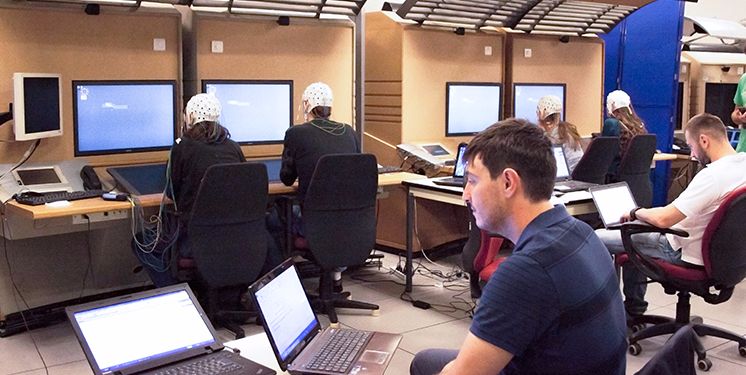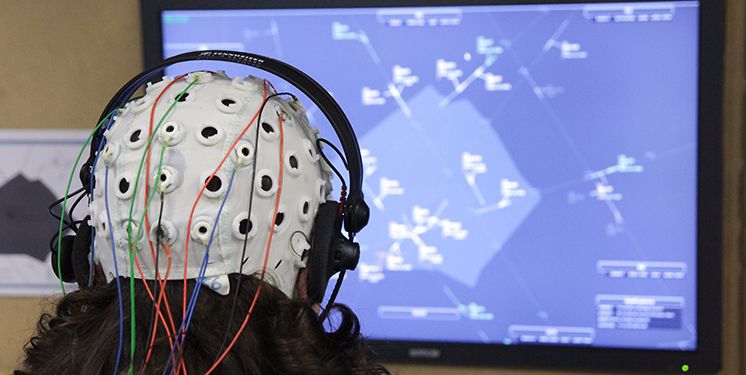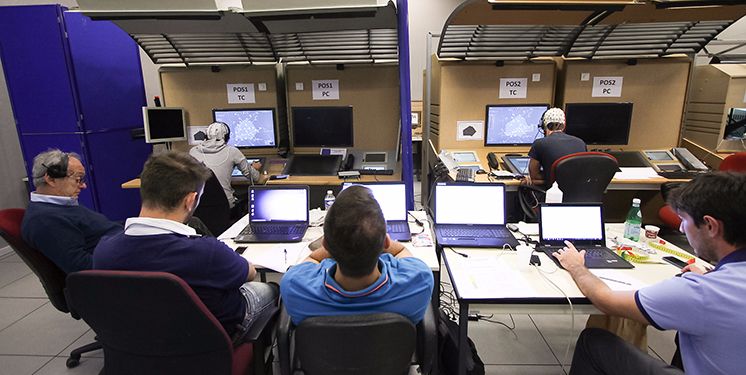Workload Evaluation
Online neurophysiological evaluation of qualified operator’s mental workload in operational environments.
Fast Navigation
It is well known that the execution of a task necessitates a considerable amount of information and decisional processing - thing that, of course, definitely affects our mental workload.
However, neurophysiological information coming from the brain, today can be turned into objective measures useful to assess a qualified operator’s mental workload during the performance of an activity requiring high-safety levels.
For this purpose, BrainSigns is developing the so-called “Brain Workload Reader”: a system that can be very useful in obtaining these kind of measures, as well as easy to integrate in all those operational environments where the ongoing workload level experienced by qualified operators should be continuously checked in order to increase the safety levels with adequate initiatives.
The innovative nature of the aforesaid system spreads over many different field: for instance, it is clear that this kind of measurement may link systems of adaptation of the Machine used in the process; thus, the workload evaluation would be able to grant innovation and improvement to the Human Machine Interaction (HMI).
So, the neurophysiological assessment of the mental workload represents a “state of the art” methodology that can be taken into account not only to optimize the human machine interaction (HMI), but also for a better planning of the work-rest cycle, in order to avoid hazardous errors during the working activity. In addition, it is worth to mention the availability of many other tools - apt to the mental workload measurement in real-time - that are able to increase the operational safety.
How We Work

So far, BrainSigns has published many research works dealing with the real-time workload evaluation in operational environments, with particular interest in professionals as Pilots, Air-Traffic-Controllers, Sky-Divers and Car Drivers. The results have been published by international scientific Journal and in Conferences’ proceedings, while the core of the system, the evaluation technology - is Patent-pending.
Technologies involved are the following ones:
 Electroencephalography (EEG) to monitoring workload levels
Electroencephalography (EEG) to monitoring workload levels Heart Rate (HR) to detect the emotional engagement
Heart Rate (HR) to detect the emotional engagement Algorithms for the online workload assessment
Algorithms for the online workload assessment
Thanks to these technologies, the mental workload can be continuously measured, in different operational environments by measurements services. Moreover, the company is working to develop an integrated hw and sw system, which is compact and easy to wear and that, if needed, can be easily integrated in systems already existing (simulators, users’ interfaces, means of transports)
Gallery
-
 Workload Evaluation - Cognitive States in Operative Environments
Workload Evaluation - Cognitive States in Operative Environments
Workload Evaluation - Cognitive States in Operative Environments
Workload Evaluation - Cognitive States in Operative Environments
-
 Workload Evaluation - Cognitive States in Operative Environments
Workload Evaluation - Cognitive States in Operative Environments
Workload Evaluation - Cognitive States in Operative Environments
Workload Evaluation - Cognitive States in Operative Environments
-
 Workload Evaluation - Cognitive States in Operative Environments
Workload Evaluation - Cognitive States in Operative Environments
Workload Evaluation - Cognitive States in Operative Environments
Workload Evaluation - Cognitive States in Operative Environments
-
 Workload Evaluation - Cognitive States in Operative Environments
Workload Evaluation - Cognitive States in Operative Environments
Workload Evaluation - Cognitive States in Operative Environments
Workload Evaluation - Cognitive States in Operative Environments
-
 Workload Evaluation - Cognitive States in Operative Environments
Workload Evaluation - Cognitive States in Operative Environments
Workload Evaluation - Cognitive States in Operative Environments
Workload Evaluation - Cognitive States in Operative Environments
-
 Workload Evaluation - Cognitive States in Operative Environments
Workload Evaluation - Cognitive States in Operative Environments
Workload Evaluation - Cognitive States in Operative Environments
Workload Evaluation - Cognitive States in Operative Environments
-
 Workload Evaluation - Cognitive States in Operative Environments
Workload Evaluation - Cognitive States in Operative Environments
Workload Evaluation - Cognitive States in Operative Environments
Workload Evaluation - Cognitive States in Operative Environments
-
View the embedded image gallery online at:
https://humanfactors.brainsigns.com/research-areas/workload-evaluation#sigProId26e866d5e4
-
 Workload Evaluation - Cognitive States in Operative Environments
Workload Evaluation - Cognitive States in Operative Environments
Workload Evaluation - Cognitive States in Operative Environments
Workload Evaluation - Cognitive States in Operative Environments
-
 Workload Evaluation - Cognitive States in Operative Environments
Workload Evaluation - Cognitive States in Operative Environments
Workload Evaluation - Cognitive States in Operative Environments
Workload Evaluation - Cognitive States in Operative Environments
-
 Workload Evaluation - Cognitive States in Operative Environments
Workload Evaluation - Cognitive States in Operative Environments
Workload Evaluation - Cognitive States in Operative Environments
Workload Evaluation - Cognitive States in Operative Environments
-
 Workload Evaluation - Cognitive States in Operative Environments
Workload Evaluation - Cognitive States in Operative Environments
Workload Evaluation - Cognitive States in Operative Environments
Workload Evaluation - Cognitive States in Operative Environments
-
 Workload Evaluation - Cognitive States in Operative Environments
Workload Evaluation - Cognitive States in Operative Environments
Workload Evaluation - Cognitive States in Operative Environments
Workload Evaluation - Cognitive States in Operative Environments
-
 Workload Evaluation - Cognitive States in Operative Environments
Workload Evaluation - Cognitive States in Operative Environments
Workload Evaluation - Cognitive States in Operative Environments
Workload Evaluation - Cognitive States in Operative Environments
-
 Workload Evaluation - Cognitive States in Operative Environments
Workload Evaluation - Cognitive States in Operative Environments
Workload Evaluation - Cognitive States in Operative Environments
Workload Evaluation - Cognitive States in Operative Environments
https://humanfactors.brainsigns.com/research-areas/workload-evaluation#sigProId26e866d5e4
What you will get:
- Objective measures of the mental workload experienced by qualified operators during the execution of operative tasks
- In measuring the workload experienced by the user during the difficulties of the tasks’ execution, a higher resolution than that one offered by the standard questionnaires
- The possibility to evaluate even online the operators’/users’ mental workload
- Integration of the neurophysiological workload assessment framework in systems already existing (e.g. simulators, users’ interfaces etc.)
- Research and development for improving the human machine interaction (HMI)
- A testing of different technologies in terms of workload required to be used
- Decrease of the error risk in the industrial environments, possible thanks to the assessment of the users' mental workload in order to avoid conditions of excessive mental fatigue
Questions that could be answered:
- Despite the high level of performance, what is the actual user’s cognitive demand when executing the task?
- Is a new technology better than the traditional one in terms of required cognitive resources?
- Is it possible to improve the usability of a user’s interface by readapting its behavior according to the user’s actual workload?




